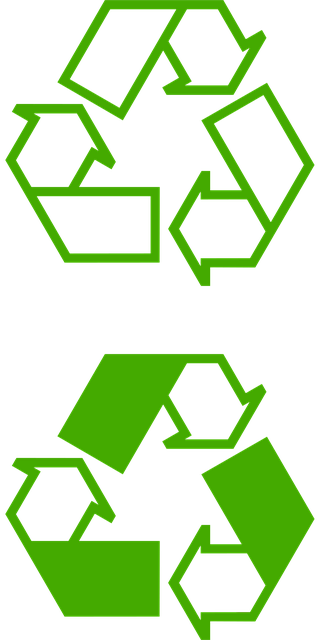Understanding mold growth, this overview explores vinegar and bleach as DIY mold removers. Vinegar's acetic acid disrupts mold cell walls on hard surfaces, while bleach acts as a powerful oxidizer for porous materials. Both have advantages: vinegar is gentle yet effective across various surfaces, while bleach delivers robust results but requires caution due to corrosiveness. Prioritizing safety and understanding the science behind these natural methods helps homeowners make informed decisions for safe and effective mold removal without harsh chemicals. The choice between vinegar vs bleach depends on whether you prioritize quick kill or long-term prevention, with combining both offering optimal results.
Do homemade mold removers live up to the hype? In this comprehensive guide, we explore the effectiveness of natural solutions like vinegar and bleach in tackling mold growth. Understanding mold’s impact on health and structures, we delve into the science behind these common household items as mold removers. We compare their use cases, pros, and cons, and provide insights for achieving optimal results with a vinegar vs. bleach debate.
- Understanding Mold Growth and Its Impact
- The Science Behind Vinegar and Bleach as Natural Removers
- Effective Use Cases for Each Remover: Pros and Cons
- Comprehensive Comparison: Vinegar vs. Bleach for Optimal Results
Understanding Mold Growth and Its Impact

Understanding mold growth and its impact is crucial before considering any mold remover, whether store-bought or homemade. Mold thrives in damp environments, often hidden behind walls, in basements, or under flooring. It can grow on various surfaces, including wood, drywall, fabric, and even food. The health impacts of mold exposure are significant; it can cause allergic reactions, respiratory issues, and irritation to the eyes, skin, and nasal membranes. Some people are more sensitive than others, making mold a particular concern for those with compromised immune systems or existing respiratory conditions.
When comparing vinegar vs bleach for mold removal, each has its advantages. Vinegar is a natural, non-toxic option effective in killing mold spores and breaking down the substances that feed mold growth. It’s ideal for hard surfaces like tiles and countertops. Bleach, on the other hand, is powerful but hazardous; it must be used with caution to avoid respiratory irritation and skin damage. Bleach is suitable for cleaning moldy porous materials like fabric or drywall, but it doesn’t address underlying moisture issues that foster mold growth.
The Science Behind Vinegar and Bleach as Natural Removers

The battle between vinegar and bleach as homemade mold removers has sparked interest among DIY enthusiasts. Both substances have long been used for their cleaning properties, but what makes them effective when it comes to tackling mold? The science behind their anti-mold capabilities lies in their chemical compositions. Vinegar, a natural acid, contains acetic acid (CH3COOH), which disrupts the cell walls of mold, preventing its growth and breaking down its structure. On the other hand, bleach (sodium hypochlorite) acts as a powerful oxidizer, effectively killing mold spores and inhibiting their reproduction.
When comparing vinegar vs bleach for mold, each has unique advantages. Vinegar is gentle yet potent, making it suitable for various surfaces without causing damage. Bleach, while highly effective, should be used with caution due to its corrosive nature, especially on delicate materials. Understanding the science behind these natural remedies empowers homeowners to make informed choices, ensuring their safety and the effectiveness of mold removal without resorting to harsh chemicals.
Effective Use Cases for Each Remover: Pros and Cons

When it comes to tackling mold, both vinegar and bleach are popular DIY options. Vinegar, with its acetic acid, effectively breaks down mold’s cell walls, making it a natural cleaner that also leaves no harsh residue. It’s ideal for non-porous surfaces like tiles and glass, and is safe for use around children and pets. However, vinegar might not be as potent in removing deep-seated mold or heavy mildew buildup.
Bleach, on the other hand, is highly effective against mold and algae due to its chlorine content, which acts as a powerful disinfectant. It’s suitable for porous materials like wood or drywall, where vinegar may not penetrate enough. However, bleach can be corrosive and toxic if mishandled, posing risks to both health and surfaces if used incorrectly. Always ensure proper ventilation and wear protective gear when using bleach.
Comprehensive Comparison: Vinegar vs. Bleach for Optimal Results

When it comes to tackling mold, a common debate arises: vinegar vs. bleach. Both are household staples with known cleaning properties, but which is more effective for removing mold? Vinegar and bleach each have unique advantages. Bleach is highly effective in killing mold spores directly, making it ideal for sanitizing surfaces. It’s especially useful in areas like bathrooms where moisture levels can promote mold growth. On the other hand, vinegar acts as a natural disinfectant and prevents mold from returning by altering the pH balance of the surface. Its acetic acid content disrupts the cellular structure of mold, rendering it ineffective.
The choice between vinegar and bleach depends on your specific needs. For a quick kill and sanitization, bleach is a robust option. However, for long-term prevention, vinegar’s ability to inhibit future mold growth makes it a valuable addition to your cleaning arsenal. In many cases, combining these two natural agents can deliver optimal results: bleach for immediate decontamination and vinegar to prevent recurrence.
